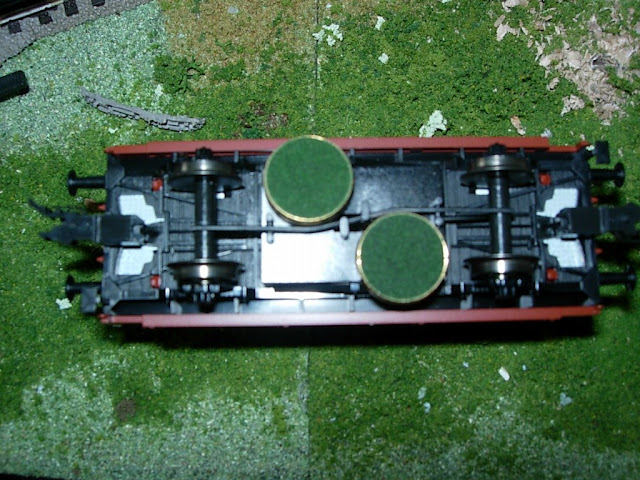I've always been fascinated by the realistic looking lakes and rivers I've seen on model railroads.
When it came to building the Sunny Model Railroad, I initially had plans to create a waterfall on the far left corner of the layout. After considering the amount of additional space a convincing looking waterfall would need and then looking at the space that I had to work with, I settled on a lake scene instead.
I imagined swaying palm trees, a man-made sandy beach and sunbathers and swimmers out to have some fun in the sun. I also envisioned a place nearby where they would park their cars and camper vans..
But back to how I created this pool of artificial water.
After much research and deliberation, I decided to go with
Envirotex polymer resin to create artificial water the for the lake scene on my model railroad.
Envirotex comes in two liquid parts, the resin and the hardener. When the two components are mixed vigorously together it forms a paste that dries clear in about 72 hours.
 |
| Building up 'water' in a model lake layer by layer with Envirotex. A few more layers left to go. |
After I poured the mixture, and while it was still wet, I added the
Woodland Scenics Field Grass to represent long water grasses you see in the pic.
 |
| Adding Woodland Scenics Field Grass along the bank of the lake |
We have to add Envirotex in several thin layers, giving each layer time to dry before adding the next layer to ensure that the product dries completely. The pic you see is the depth of the lake after pouring in the third layer.
 |
| More Field Grass added. The 'rocks' at the bottom of the lake are actually cork chips! |
Meanwhile, I'm trying to figure out how best to create model HO scale fish which I can add to the lake. I'll then pour one final layer of resin over the fish for the final depth.
During the curing I covered the drying resin with the lid of a train set box. This was to prevent dust and loose scenery particles from settling on the surface of the drying resin and becoming a permanent fixture.
There are, of course, other alternatives to Envirotex.
Products by Woodland Scenics such as their
Realistic Water come ready-mixed in thick liquid form and only have to be poured on and left to dry. They also have another product called
E-Z Water which comes in the form of resin chips that have to be heated and melted over a stove.
I've tried Realistic Water and can say that the clarity and surface sheen of the cured product seems as good as Envirotex. I also misplaced a bag of E-Z Water that I had purchased early on --- which is probably a blessing in disguise. Molten resin is something I don't think I should be messing with..
I'll be adding more details to the lake scene very soon. Stay tuned!









 Model Train Help by Robert Anderson
Model Train Help by Robert Anderson 







































